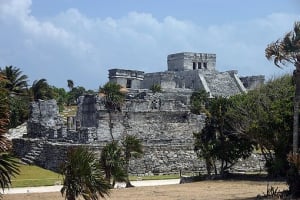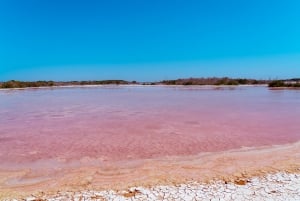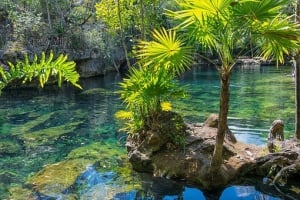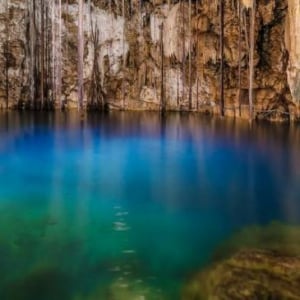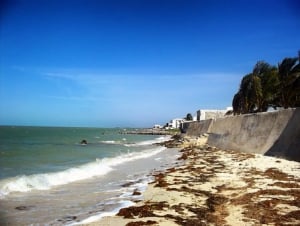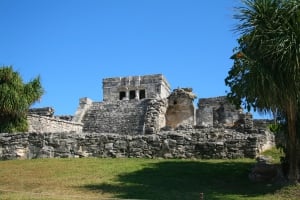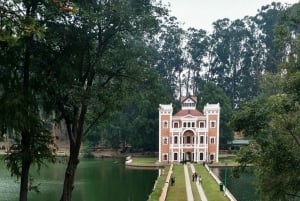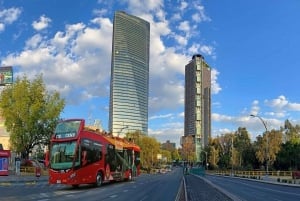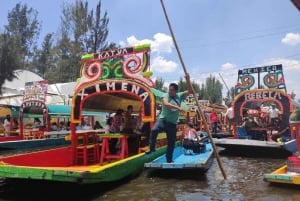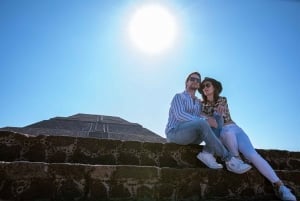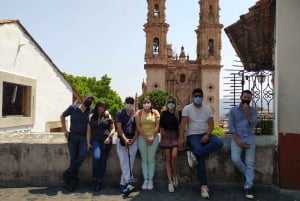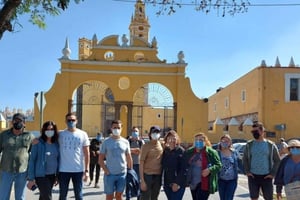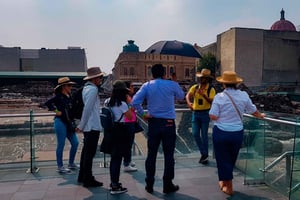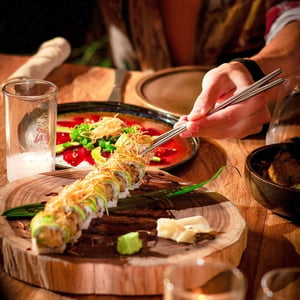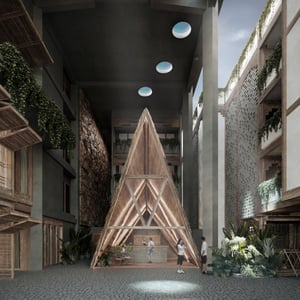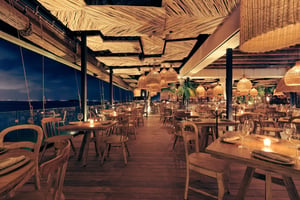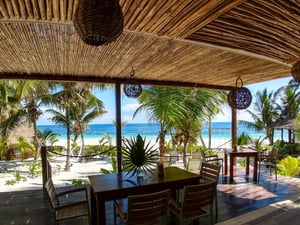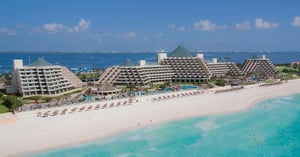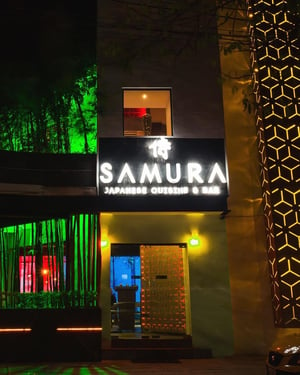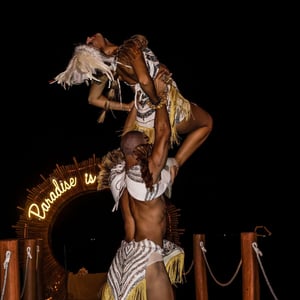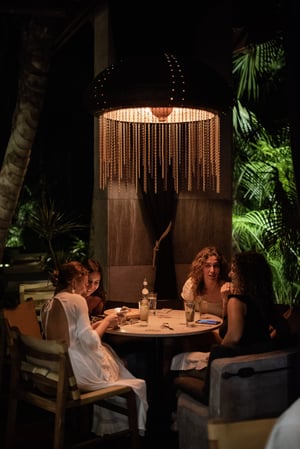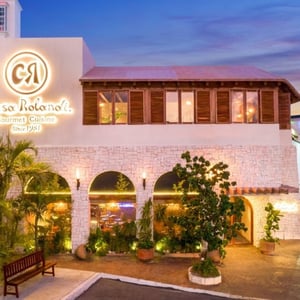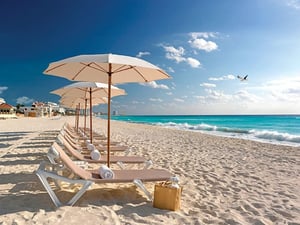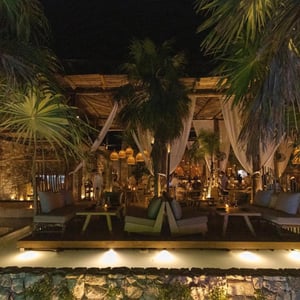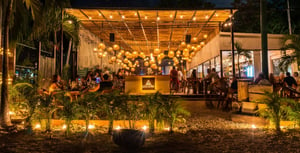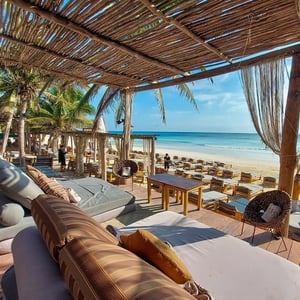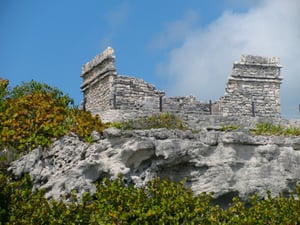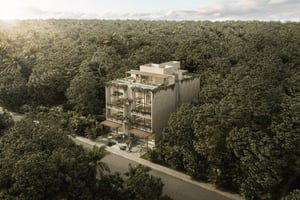Yucatan. How to live without a soul that has been kidnapped by demons?
You have to go to hell and get it back. Immerse yourself in the water of the turquoise cenote.
Book Top Experiences and Tours in Mexico:
If youʻre booking your trip to Mexico last minute, we have you covered. Below are some of the top tours and experiences!- Chautla's Castle, Lavender Farm, and Valquirico Private Tour
- Electric Bike City Tour with a taco stop.
- Mexico City: Hop-on Hop-off City Tour by Turibus 1-Day Pass
- Mexico City: Double Decker Bus Night Tour
- CDMX: Xochimilco, Coyoacan with Frida Kahlo & Optional Lunch
'For the Maya, the soul and the body are not permanently connected,' Gabriel begins quietly. - 'Suppose I am your soul and you are only your body. You don't care about me, so the demons take me with them to the underworld. What can you do without me? How can you live without your soul? You have to find it. So you come here - Gabriel points to the depths of the water. We are standing on the banks of a cenote, somewhere in the middle of the Yucatan rainforest.
Yucatan cenotes - heaven's gateway to hell
How many such extraordinary lakes there are on the entire peninsula is not entirely known. Thousands are said to exist, sometimes tens of thousands. Some cenotes have closed vaults and are underground. They are sometimes so high that they look like rock churches. Others are open and their water glistens fabulously in the sun. Some join together to form some of the longest cave systems in the world. They are a paradise for divers. - 'Once the whole of Yucatán was underwater, a huge coral reef,' says Gabriel, pointing to shells and fossilised coral imprinted on the stones. - The land was uplifted by the impact of an asteroid, supposedly the same one that led to the extinction of the dinosaurs. It fell here, near the village of Chicxulub," he says. The limestone ground was easily carved by rainwater and this led to the formation of karst wells called cenotes. "Ts'onot" in the Maya language means source of underground drinking water. These were the only places where water was once drawn from, as there are hardly any rivers or lakes in the Yucatán peninsula. Among the most important figures in the ancient Maya pantheon was the rain god Chac, to whom sacrifices were made at cenotes. At Cenote Sagrado in Chichén Itzá, archaeologists have found jade and jade ornaments, copper discs and golden bells. Gabriel also finds Mayan treasures. He was hired by a Mexican family who realised they had several cenotes on their 80 hectares. They considered it a lucrative idea to make them available to tourists. Now Gabriel uses machetes to cut paths, build access roads, dive between one reservoir and another, and fish out various pre-Hispanic souvenirs. He keeps them in a wooden box, the kind used for tomatoes. He hands me clay pots, jewellery and small stone Mayan masks. - You have a small museum of archaeology in this box - I marvel and ask if any institution was interested in his findings. - Come on, there are so many treasures in Yucatan that they would have no place to keep or display them," smiles Gabriel. - These were offerings not only to the rain god, but also to the gods of the world of the dead. The Maya believed that cenotes were the gateway to their land, the Mayan hell called Xibalba," he adds. I look at the turquoise lake glistening in the sun and I cannot believe it. It doesn't look like a gateway to hell, but to heaven.
On the ruins of the city's former rulers
- When Queen Elizabeth II of England came here in 1975, a Mayan prayer for rain was performed. The ceremony was led by the Xiu family, descendants of the former rulers of the city of Uxmal. Although the event took place in February, right in the middle of the dry season, the sky was suddenly covered with clouds and it started raining immediately," Antonio, a guide at the archaeological site of Uxmal, tells me. At the time of its greatest splendour, there were about 20,000 people living here. The highest buildings reach thirty-some metres. I climb up the various constructions and try to imagine what everyday life looked like for the ancient Maya. Today, the only inhabitants of this great city are swallows living in the arcades and iguanas basking on the stones.
Archaeological zones of Yucatán
There are almost 150 archaeological zones in the Yucatán peninsula. There are the most famous ones, such as Chichén Itzá, Tulum or Cobá, but also dozens of other places where tourists come less frequently and where I am completely alone among the ruins. Many of them had already been abandoned before the arrival of the Spanish in the 16th century. For reasons that are not entirely clear. Archaeologists claim that the inhabitants probably exploited the area so much that the big cities were no longer able to feed themselves. However, some of them still existed during the conquest period. This was the case, for example, with T'Hó, present-day Mérida.



